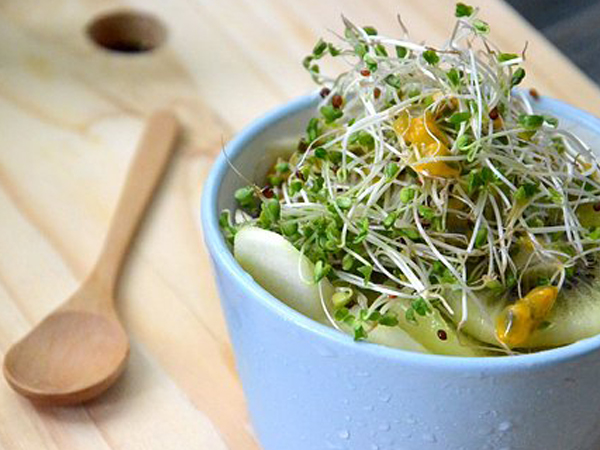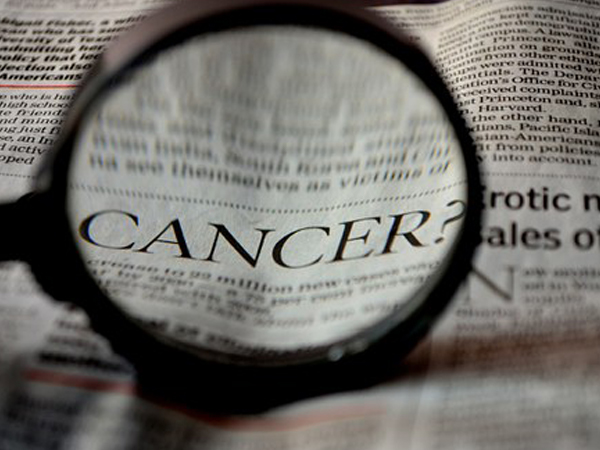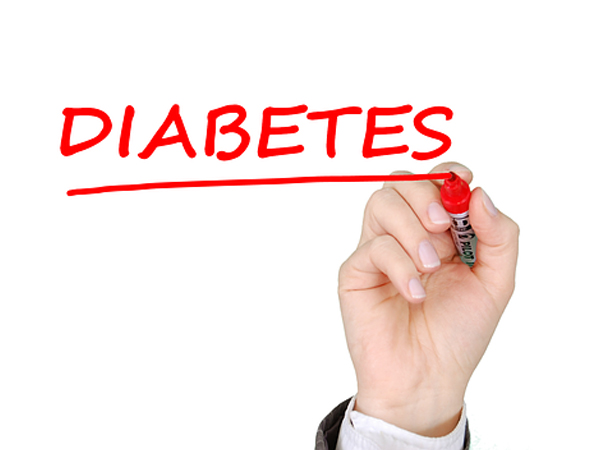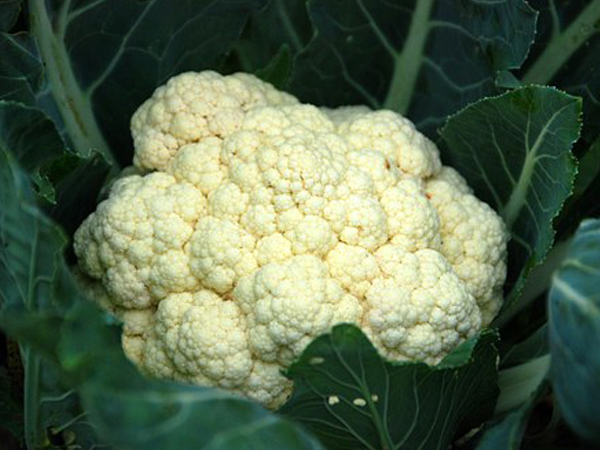Just In
- 22 min ago

- 2 hrs ago

- 3 hrs ago

- 5 hrs ago

Don't Miss
- News
 Soumya Vishwanathan Murder Case: Mother Opposes Bail For Convicts; Hearing On April 22
Soumya Vishwanathan Murder Case: Mother Opposes Bail For Convicts; Hearing On April 22 - Movies
 Thug Life Release Date Update: Kamal Haasan-Mani Ratnam's Epic Drama To Hit Screens In 2025 On This Date?
Thug Life Release Date Update: Kamal Haasan-Mani Ratnam's Epic Drama To Hit Screens In 2025 On This Date? - Education
 UPMSP Class 10 and 12 Results 2024 to be Released Today, Check the Details Here
UPMSP Class 10 and 12 Results 2024 to be Released Today, Check the Details Here - Sports
 Virat Kohli Record Against Kolkata Knight Riders and at Eden Gardens Ahead Of RCB vs KKR IPL 2024 Match 36
Virat Kohli Record Against Kolkata Knight Riders and at Eden Gardens Ahead Of RCB vs KKR IPL 2024 Match 36 - Finance
 Want To Be Debt Free? 5 Simple Ways To Repay Your Loan Faster
Want To Be Debt Free? 5 Simple Ways To Repay Your Loan Faster - Automobiles
 Tesla CEO Elon Musk's Much-Awaited Visit to India Deferred, Leaving Questions Unanswered
Tesla CEO Elon Musk's Much-Awaited Visit to India Deferred, Leaving Questions Unanswered - Technology
 Garena Free Fire Max Redeem Codes for April 20, 2024: Get Access to the Latest In-game Loot
Garena Free Fire Max Redeem Codes for April 20, 2024: Get Access to the Latest In-game Loot - Travel
 Journey From Delhi To Ooty: Top Transport Options And Attractions
Journey From Delhi To Ooty: Top Transport Options And Attractions
Sulforaphane: Benefits, Side Effects And Food Sources
A substance called sulforaphane (SFN) that is usually found in cruciferous vegetables, especially broccoli sprouts, is said to be quite beneficial for the health. Its prime notable health benefits are its ability to perform as an anticancer, antimicrobial, anti-inflammatory and a neuroprotective [1] . It has also been found to be effective in protecting against ageing and diabetes [2] .

Sulforaphane is a natural plant compound that is found in cruciferous vegetables [3] - such as cabbage, cauliflower, kale and broccoli. It is activated only when the vegetables are chopped or chewed [4] . Read on to know more about the benefits, side effects and food sources of this highly effective and beneficial compound.
What Is Sulforaphane?
A sulfur-rich compound - Sulforaphane - is said to possess several health benefits. In the vegetables like cabbage, broccoli, etc., this compound is in the inactive form 'glucoraphanin' [5] . This form belongs to the glucosinolate family of plant compounds. It is only when glucoraphanin comes in touch with myrosinase (a family of enzymes that participates in the defence response of plants) that it is activated [6] .
Myrosinase enzymes can be released or activated only when a plant is damaged. This is why cruciferous vegetables must be cut, chewed or chopped to release myrosinase and in turn, activate sulforaphane.
Raw vegetables tend to have the highest amount of sulforaphane. A study result released showed that raw broccoli contained about ten times more sulforaphane than cooked broccoli [7] . It is recommended that one steams the vegetables for about one to three minutes before eating. This is the most ideal technique to optimize sulforaphane levels while cooking. Also, one should remember to cook the vegetables below 140 degree Celsius (exceeding this temperature would lead to loss of glucosinolates) [8] . Therefore, cruciferous vegetables should never be boiled. You can eat them raw or slightly steamed.

When in the body, sulforaphane works by stimulating the production of important enzymes that neutralize free radicals [9] .
Potential Health Benefits Of Sulforaphane
Studies have indicated that sulforaphane can offer the following health benefits:
- Anticancer effects: Quite a few animal studies have shown sulforaphane to have anticancer properties. It has shown the ability to reduce both the size and number of cancer cells. This compound also shows the ability to prevent cancer cell growth through the release of antioxidant and detoxification enzymes that protect against carcinogens [10] . However, studies are still pending to be conducted to find out if it would be safe to use sulforaphane in a clinical setting to lower cancer risk.

- Heart health support: Studies have shown that sulforaphane can boost heart health in several ways [11] . This compound benefits heart health by reducing inflammation (as inflammation can lead to narrowing of arteries, and in turn, cause heart disease).

- Antidiabetic effects: A 12-week study conducted on people with type 2 diabetes examined how consumption of broccoli sprout extract daily could affect blood sugar levels. The results showed that sulforaphane could reduce fasting blood sugar levels to a great extent [12] .

Small-scale studies have shown that sulforaphane can show beneficial results in the following cases as well [13] :
- Protection against brain damage
- Treatment of certain symptoms of autism
- Protection against sun damage
- Improvement in bowel movement issues such as constipation
- Promotion of weight loss
Side Effects And Risk Factors Of Sulforaphane
The amounts of sulforaphane present in cruciferous vegetables are considered safe for consumption. However, many people choose to use sulforaphane supplements that can be bought from health stores. The problem is that the over-consumption of these supplements can cause certain side effects [14] .
The sulforaphane supplements are usually made from broccoli or broccoli sprout extract. It is generally in the concentrated form, indicating an amount that is much beyond the content of it found naturally in food sources.
Although there is no particular dosage recommendation, going by what is mentioned on the supplement packs, you might need to take around 400mcg per day (that is 1 to 2 capsules daily).
The usual side effects of these supplements are as follows [15] :
- Constipation
- Diarrhoea
- Increase in gas
Although these supplements are growing in popularity, more research is needed to determine the ideal dose and safety.
Food Sources Of Sulforaphane
Sulforaphane can be obtained naturally from a wide range of cruciferous vegetables. So, to increase the intake of sulforaphane, include the following vegetables in your diet [16] :

- Cauliflower
- Broccoli
- Cabbage - both red and white
- Broccoli sprouts
- Kale
- Brussels sprouts
- Bok choy
- Arugula
- Watercress
Ensure that you cut the vegetables before you eat them. Also, chewing them well will activate sulforaphane from its inactive form (glucoraphanin).

To boost the intake, you can also choose to add mustard seeds or mustard powder to your meals [17] . These being rich in dietary myrosinase, will help in increasing the availability of sulforaphane (especially in cooked vegetables).
On A Final Note...
It is always wise to talk to your healthcare provider before you make any specific dietary or supplement changes. Consumption of sulforaphane may interact with the performance of certain medications, therefore, one should always consult their doctor before consuming this in ample quantities, especially when it comes to the intake of sulforaphane supplements.
- [1] Kim, J. K., & Park, S. U. (2016). Current potential health benefits of sulforaphane.EXCLI journal,15, 571–577.
- [2] Assar, M. E., Angulo, J., & Rodríguez-Mañas, L. (2016). Diabetes and ageing-induced vascular inflammation.The Journal of physiology,594(8), 2125–2146.
- [3] Sita, G., Hrelia, P., Graziosi, A., & Morroni, F. (2018). Sulforaphane from cruciferous vegetables: recent advances to improve glioblastoma treatment.Nutrients,10(11), 1755.
- [4] Atwell, L. L., Hsu, A., Wong, C. P., Stevens, J. F., Bella, D., Yu, T. W., … Ho, E. (2015). Absorption and chemopreventive targets of sulforaphane in humans following consumption of broccoli sprouts or a myrosinase-treated broccoli sprout extract.Molecular nutrition & food research,59(3), 424–433.
- [5] Houghton, C. A., Fassett, R. G., & Coombes, J. S. (2016). Sulforaphane and Other Nutrigenomic Nrf2 Activators: Can the Clinician's Expectation Be Matched by the Reality?.Oxidative medicine and cellular longevity,2016, 7857186.
- [6] Clarke, J. D., Hsu, A., Riedl, K., Bella, D., Schwartz, S. J., Stevens, J. F., & Ho, E. (2011). Bioavailability and inter-conversion of sulforaphane and erucin in human subjects consuming broccoli sprouts or broccoli supplement in a cross-over study design.Pharmacological research,64(5), 456–463.
- [7] Conaway, C. C., Getahun, S. M., Liebes, L. L., Pusateri, D. J., Topham, D. K., Botero-Omary, M., & Chung, F. L. (2000). Disposition of glucosinolates and sulforaphane in humans after ingestion of steamed and fresh broccoli.Nutrition and cancer,38(2), 168-178.
- [8] Yuan, G. F., Sun, B., Yuan, J., & Wang, Q. M. (2009). Effects of different cooking methods on health-promoting compounds of broccoli.Journal of Zhejiang University. Science. B,10(8), 580–588.
- [9] Ritz, S. A., Wan, J., & Diaz-Sanchez, D. (2007). Sulforaphane-stimulated phase II enzyme induction inhibits cytokine production by airway epithelial cells stimulated with diesel extract.American Journal of Physiology-Lung Cellular and Molecular Physiology,292(1), L33-L39.
- [10] Bose, C., Awasthi, S., Sharma, R., Beneš, H., Hauer-Jensen, M., Boerma, M., & Singh, S. P. (2018). Sulforaphane potentiates anticancer effects of doxorubicin and attenuates its cardiotoxicity in a breast cancer model.PloS one,13(3), e0193918.
- [11] Bai, Y., Wang, X., Zhao, S., Ma, C., Cui, J., & Zheng, Y. (2015). Sulforaphane Protects against Cardiovascular Disease via Nrf2 Activation.Oxidative medicine and cellular longevity,2015, 407580.
- [12] Axelsson, A. S., Tubbs, E., Mecham, B., Chacko, S., Nenonen, H. A., Tang, Y., ... & Haymond, M. W. (2017). Sulforaphane reduces hepatic glucose production and improves glucose control in patients with type 2 diabetes.Science translational medicine,9(394), eaah4477.
- [13] Kim, J. K., & Park, S. U. (2016). Current potential health benefits of sulforaphane.EXCLI journal,15, 571–577.
- [14] Li, Y., Buckhaults, P., Li, S., & Tollefsbol, T. (2018). Temporal efficacy of a sulforaphane-based broccoli sprout diet in prevention of breast cancer through modulation of epigenetic mechanisms.Cancer Prevention Research,11(8), 451-464.
- [15] Paul, B., Li, Y., & Tollefsbol, T. O. (2018). The Effects of Combinatorial Genistein and Sulforaphane in Breast Tumor Inhibition: Role in Epigenetic Regulation.International journal of molecular sciences,19(6), 1754.
- [16] Tortorella, S. M., Royce, S. G., Licciardi, P. V., & Karagiannis, T. C. (2015). Dietary Sulforaphane in Cancer Chemoprevention: The Role of Epigenetic Regulation and HDAC Inhibition.Antioxidants & redox signaling,22(16), 1382–1424.
- [17] Okunade, O., Niranjan, K., Ghawi, S. K., Kuhnle, G., & Methven, L. (2018). Supplementation of the diet by exogenous myrosinase via mustard seeds to increase the bioavailability of sulforaphane in healthy human subjects after the consumption of cooked broccoli.Molecular nutrition & food research,62(18), 1700980.
-
 healthPhytochemicals Discovered In Himalayan Plant Buransh That Inhibit COVID-19 Virus
healthPhytochemicals Discovered In Himalayan Plant Buransh That Inhibit COVID-19 Virus -
 nutritionMugwort: Health Benefits, Uses And Side Effects
nutritionMugwort: Health Benefits, Uses And Side Effects -
 disorders curePM Narendra Modi Mentioned Sanjeevani Plant 'Solo' In His Speech: Know Its Medicinal Benefits
disorders curePM Narendra Modi Mentioned Sanjeevani Plant 'Solo' In His Speech: Know Its Medicinal Benefits -
 wellnessWhat Is Paracress? Its Benefits, Side Effects And Recipes
wellnessWhat Is Paracress? Its Benefits, Side Effects And Recipes -
 diet fitnessForskolin For Weight Loss: Dosage And Risks
diet fitnessForskolin For Weight Loss: Dosage And Risks -
 faith mysticismImportance Of The White Aak Plant In Hinduism
faith mysticismImportance Of The White Aak Plant In Hinduism -
 diet fitness10 Plant-based Protein Foods For Weight Loss
diet fitness10 Plant-based Protein Foods For Weight Loss -
 wellnessOrnamental Plant Extract May Help Combat Asthma
wellnessOrnamental Plant Extract May Help Combat Asthma -
 wellnessTop Healthy Habits That You Need To Start By Your 30s
wellnessTop Healthy Habits That You Need To Start By Your 30s -
 wellnessWhy You Should Only Give Cow's Milk To Your Child & Not A Plant-Based One?
wellnessWhy You Should Only Give Cow's Milk To Your Child & Not A Plant-Based One? -
 gardening15 Indoor Garden Plant Ideas
gardening15 Indoor Garden Plant Ideas -
 improvement10 Natural House Air Purifiers
improvement10 Natural House Air Purifiers


 Click it and Unblock the Notifications
Click it and Unblock the Notifications



